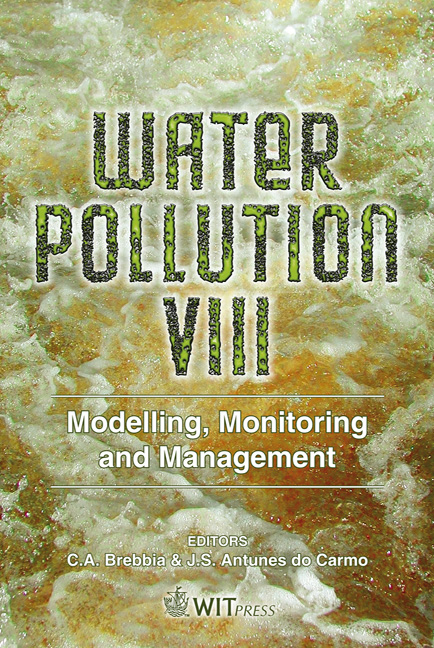Phylogenetic Diversity Of Procaryotae And Their Contribution To Excess Sludge Demineralization In A Gravel Contact Oxidation Reactor
Price
Free (open access)
Transaction
Volume
95
Pages
13
Published
2006
Size
483 kb
Paper DOI
10.2495/WP060571
Copyright
WIT Press
Author(s)
S. Lin, Y. Jin, L. Fu & C. Quan
Abstract
Phylogenetic diversity of procaryotae and their function to excess sludge demineralization in a gravel contact oxidation reactor (GCOR) were studied by constructing a 16SrRNA library and PCR-based molecular surveys of environmental 16SrRNA genes. The sequence analysis of 16SrRNA genes indicated that granular bacterial communities were composed of Proteobacteria, Bacteroidetes, Nitrobacteraceae, Low G+C and the Unclassified bacteria group. The dominant members were β-, γ-Proteobacteria. Different kinds of bacteria which contributed to excess sludge decrement were associated with uncoupled metabolism, diverse bacterial interactive behaviour and domination of slow growers. Keywords: suspended granular in gravel contact oxidation reactor (GCOR), phylogenetic diversity of microorganisms, 16SrDNA library, excess sludge reduction. 1 Introduction Biological wastewater treatment involves the transformation of dissolved and suspended organic contaminants to biomass and evolved gases (CO2, CH4, N2, and SO2) which are separated from the treated water [1]. Excess biomass produced within processes is creating environmental challenges due to expensive ultimate disposal options such as landfill and/or incineration [2] and disposal costs may account for 60% of total plant operating costs (Horan [20]). So it is
Keywords
suspended granular in gravel contact oxidation reactor (GCOR), phylogenetic diversity of microorganisms, 16SrDNA library, excess sludge reduction.





